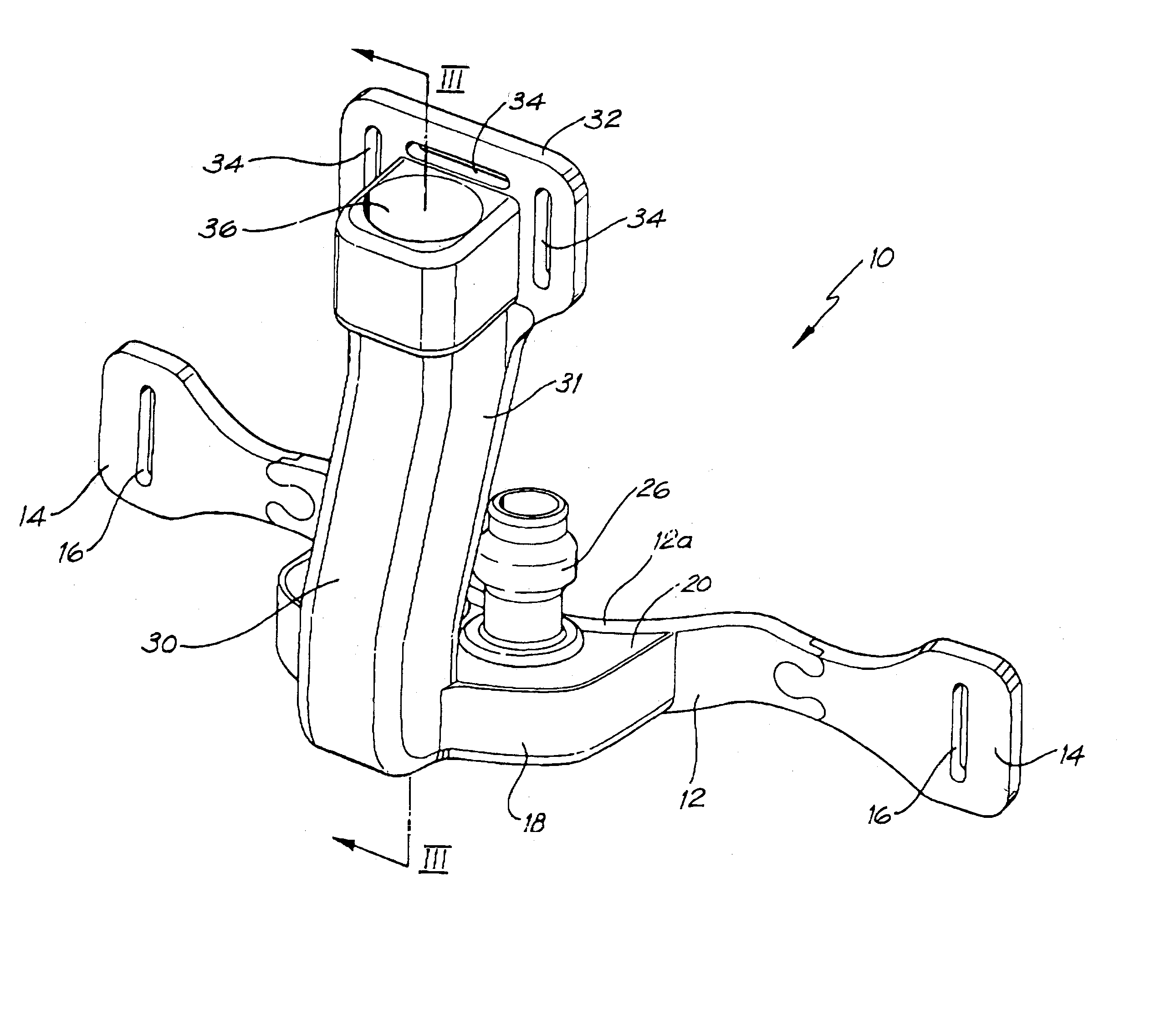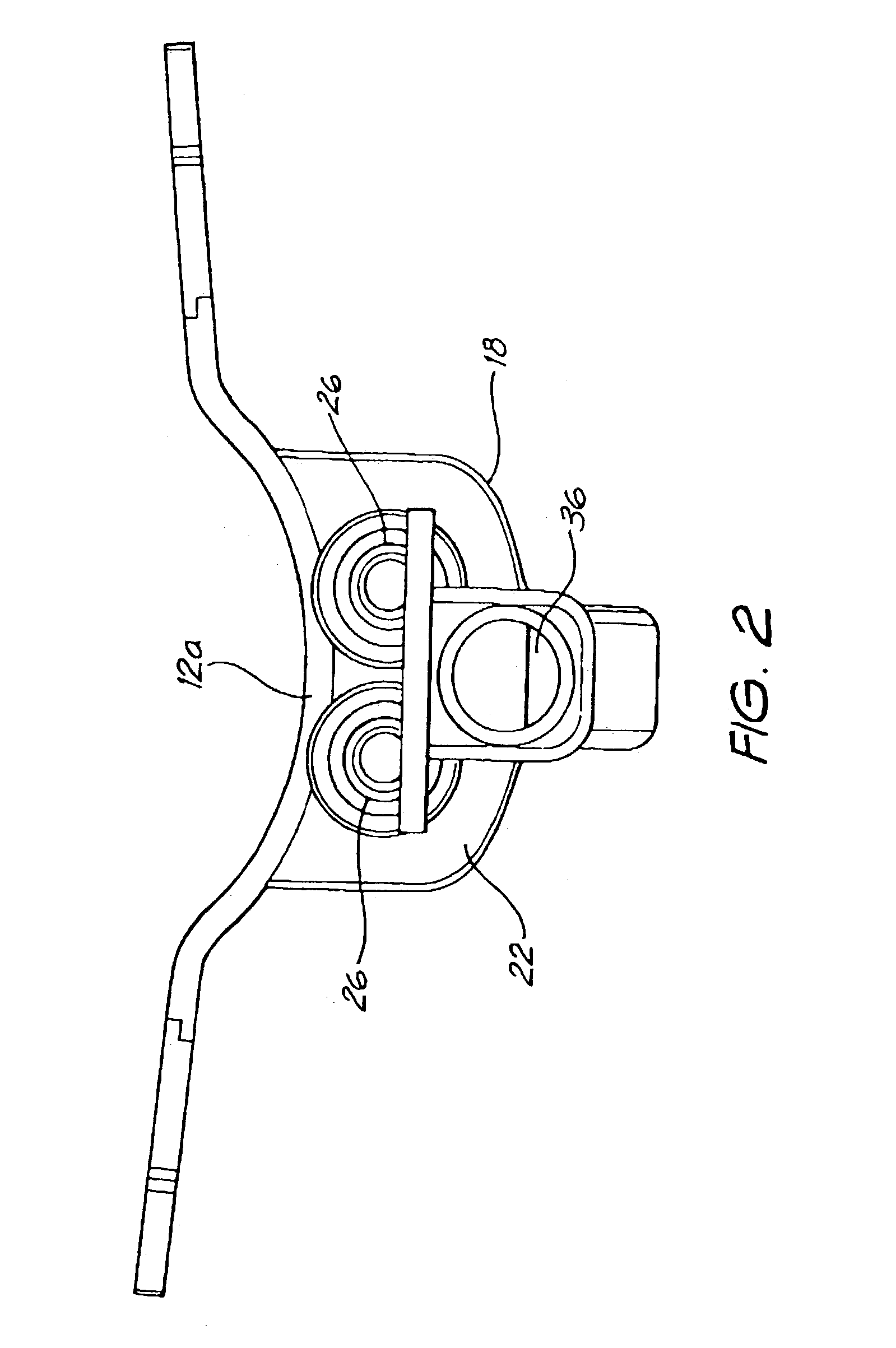Mask
- Summary
- Abstract
- Description
- Claims
- Application Information
AI Technical Summary
Benefits of technology
Problems solved by technology
Method used
Image
Examples
second embodiment
[0080]In the second embodiment, the prongs and upper surface of the manifold are replaced with a flexible shaped “bubble”62, also shown in FIG. 8. The bubble may be made from a flexible elastomeric material (such as silastic). A generally kidney bean shaped opening 64 is provided in the centre of the bubble (see FIG. 9). The bubble ranges in thickness from t1, about 0.2–0.4 mm at the edge around the opening 64 to t2 about 1.5 mm at its base where it joins the manifold (see FIG. 9).
first embodiment
[0081]With reference to FIGS. 11a and 11b, in use, when the mask is correctly positioned on a patient's face with the manifold disposed between the base 101 of the patient's nose and their mouth, the membrane 62 is located below the base 101 of the nose. The relatively thin “bubble” is flexible and when air is admitted under pressure into the manifold the bubble expands and will seal three-dimensionally with the base portion 101 of the patient's nose. FIG. 11b illustrates the unexpanded, non-pressurised shape of the bubble in dashed lines and the pressurised form in complete lines illustrating though slightly exaggerating the expansion of the patient's nose. Air under pressure will flow into the patient's nose through their nares. The patient's nose, in particular their anterior nasal cavities, will also expand (see FIG. 11b) and be pushed outwards. This creates a rolling seal at the nasal (naris) entry margins The seal is formed by the skin around the nostrils (under pressure) push...
PUM
 Login to View More
Login to View More Abstract
Description
Claims
Application Information
 Login to View More
Login to View More - R&D
- Intellectual Property
- Life Sciences
- Materials
- Tech Scout
- Unparalleled Data Quality
- Higher Quality Content
- 60% Fewer Hallucinations
Browse by: Latest US Patents, China's latest patents, Technical Efficacy Thesaurus, Application Domain, Technology Topic, Popular Technical Reports.
© 2025 PatSnap. All rights reserved.Legal|Privacy policy|Modern Slavery Act Transparency Statement|Sitemap|About US| Contact US: help@patsnap.com



